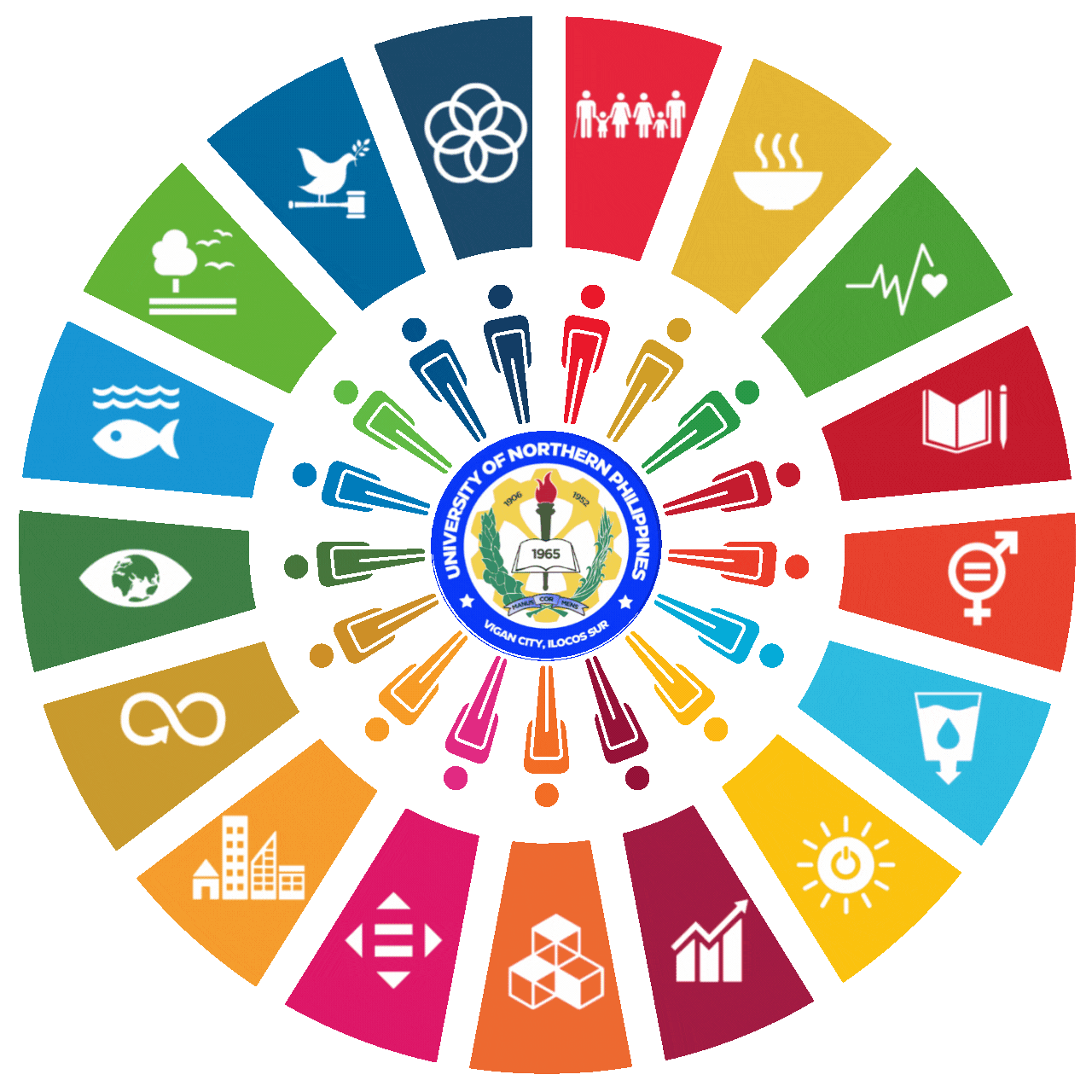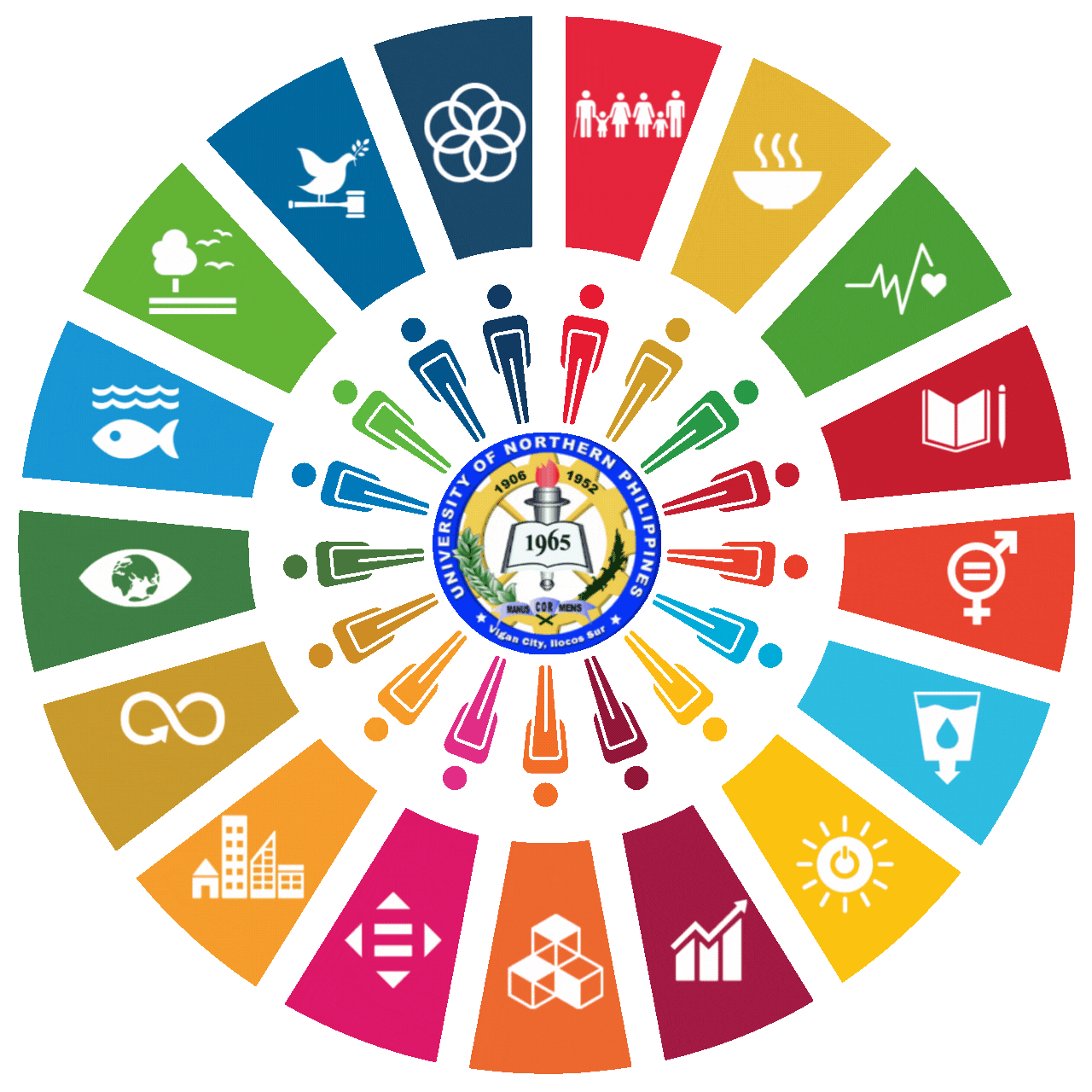

SDG 6 - CLEAN AND SANITATION
The University of Northern Philippines (UNP) has implemented several initiatives to address Sustainable Development Goal 6 (SDG 6), which focuses on ensuring the availability and sustainable management of water, and sanitation for all.
Proponents: Christian David C. Alconcel and Randolf M. Agup
Abstract: This study presents an experimental analysis of water jet dynamics using an improvised jet impact apparatus. The research encompassed the design, construction, and testing of the apparatus to evaluate its performance. Testing involved determining and comparing theoretical and experimental impact forces under various experimental setups. These setups included different masses (70.0 g, 100.0 g, 150.0 g) and target vanes with varied angles of impact (90°, 29.5°, 180°). The target vanes were designed with flat, conical, and hemispherical surfaces. The results indicated that the improvised apparatus achieved an overall percentage error of 17.39% in determining impact forces. Among the configurations, the hemispherical target vane combined with a 100 g mass-produced the most accurate results, with a 7.04% error. The highest percentage error of 31.6% occurred with the flat target vane and a 70 g mass. These findings suggest that while the apparatus can yield precise results under optimal conditions (e.g., hemispherical vane and 100 g mass), it may produce less accurate measurements in other configurations. Despite its limitations, the improvised jet impact apparatus demonstrates utility as a teaching and learning tool for exploring fluid dynamics, particularly the behavior of water jets. It provides an accessible means of demonstrating fundamental concepts, even if not suited for experiments requiring high precision. Overall, the apparatus serves as a valuable resource for introducing students to the principles of jet impact and fluid dynamics.
Keywords: fluid mechanics, fluid dynamics, water jet impact, improvised apparatus, improvisation
Proponents: Jhomar P. Madriaga and Antonio N. Ayop
Abstract: Zooplankton, which graze on the water column, play a crucial role in maintaining the balance of phytoplankton communities and reducing the frequency of blooms. Despite their substantial contributions to the marine ecosystem, their value to coastal communities was frequently overlooked because of their microscopic nature. The lack of data on marine zooplankton in the Ilocos Sur Region motivated this study conducted in Brgy. Fuerte, Caoayan, Ilocos Sur, to generate new insights into the zooplankton community. It aims to analyze zooplankton morphology, abundance, and physicochemical parameters. Sample collection was conducted during the evening (7 pm to 10 pm). Surface water samples were collected using a handheld fine mesh plankton net (50 m) and preserved with formaldehyde and Lugol’s solution. Thirteen groups of zooplankton populations were recorded in Brgy. Fuerte, Caoayan, Ilocos Sur. They were categorized into two kingdoms: Animalia and Chromista. Common zooplankton included Nauplius larvae, Calanus sp. (Calanoid), and Dioithona sp. (Cyclopoid). The overall density of zooplankton recorded was 192,050 cells/L, which comprises four stations. Regarding species density, the top five dominant species were Favella sp. (Tintinnids) with 163,689 cells/L, Nauplius larvae with 13,478 cells/L, Calanus sp. (Calanoid) with 9,300 cells/L, Sabellaria sp. (Middle trochophore larvae) with 1,283 cells/L, and Dioithona sp. (Cyclopoid) with 1,211 cells/. Future studies should investigate the complex relationships between physicochemical factors and zooplankton abundance and diversity while extending the sampling period to include additional zooplankton species. Understanding these relationships will enhance the comprehension of ecosystem dynamics and develop more effective coastal water management strategies.
Keywords: Zooplankton, Stations, Density, Species diversity, Water parameters, Population, Ilocos Sur


















